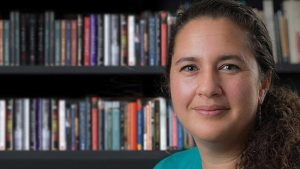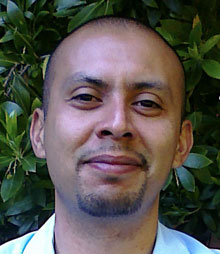17 Simpson’s Influence: Claywork in an Indigenous STEAM Program
Domonic Lodge
Barajas-López, F., & Bang, M. (2018). Indigenous making and sharing: Claywork in an Indigenous STEAM program. Equity & Excellence in Education, 51(1), 7-20. https://doi.org/10.1080/10665684.2018.1437847


Preparing to Walk the Path
In order to engage and explore the text in a way that seeks to honour its full potential, we must first detach ourselves (even if only temporarily) from Western notions of ontology and epistemology. It is crucial to explore important concepts in the text such as animate, inanimate and materiality in the context Barajas-López and Bang (2018) mean them to be. Such a journey cannot be taken in good faith when we bring with us the suffocating weight of our fixed perspectives. We must first consciously acknowledge, and then release ourselves from, our preconceptions regarding what it is to exist in relation to the world around us, be or believe and in doing so begin to see through new eyes and listen through new ears. This first step may be a stumbling block for many, especially those of a European colonial upbringing similar to myself. However, Barajas-López and Bang make it clear that we cannot meaningfully engage with Indigenous teachings of Science, Technology, Engineering, Arts and Mathematics (STEAM) without first accepting that what we know and how we came to know it, are but one of many versions of knowing: This is perhaps the first lesson from the text to be learned.
Theory and Pedagogy behind ISTEAM
Throughout Indigenous Making and Sharing: Claywork in an Indigenous STEAM Program, Barajas-López and Bang (2018) provide ample evidence to challenge dominant conceptions of meaning making and materiality. They suggest that by doing so, we can use ISTEAM and makerspaces to create equity and transformative learning environments by providing a counter argument to the crushing weight of commonly accepted colonial pedagogies. In addition, Barajas-López & Bang posit we can find immense meaning through “living Indigenous ontologies, epistemologies, axiologies, and cosmologies in learning, practice, and being” (p. 9).
Combating Indigenous Erasure
Throughout their work, Barajas-López and Bang (2018) demonstrate how by starting with Indigenous teachings and principles, they were able to co-create a research project from the ground up that walked alongside Indigenous ways of learning. This is a crucial step, as by involving all parties in decision making from conception to fruition, the research group authentically engaged in meaning making and “cultivating Indigenous nature-culture relations” (p. 9). The pedagogical emphasis throughout the research process was on land, or ‘Aki’ as teacher, with a strong emphasis on the relationship between earth and water. Here we see a clear line from the ideas of Leanne Betasamosake Simpson and her work on land as pedagogy (Simpson, 2014). In line with learning practices we see from other Indigenous academics, Simpson as well as Barajas-Lópenz and Bang describe how walking and storying are implemented as the core languages of learning. In this research project, local Indigenous artists, scientists and academics were not seen as the principal sources of knowledge. Instead, their wisdom and insight positioned them as guides along the path the students journeyed on. These guides existed not to instruct, but instead to help students interpret the wisdom of nature, and navigate a complex and often combative modern society in relation to many Indigenous principles: Here the true value of ISTEAM can be found.
The Trauma of Clay
A beautiful moment takes place later in the text when an interviewee named Miguel bridges the gap between Western knowledge and Indigenous teachings through his description of “Elder clay” (p. 12). Miguel starts by describing the clay as inanimate, consisting of ionic charges explaining why it might repel or attract different materials. At this point, you feel confident you could verify Miguel’s knowledge in any Western Undergraduate degree Earth Sciences textbook. However, Miguel then goes on to discuss the trauma of clay and its connection to Elders, giving it life beyond its chemical or material composition. You see, as Miguel puts it “clay holds a lot of history. Clay’s seen a lot of things and the traumas, in particular, are found within its properties” (p. 12). Impermeable and layered, clay holds much of what passes through it, acting as both a foundation and a filter. Furthermore, by also being impermeable to water, clay provides the site of chemical reactions which interact with, influence and facilitate change in their surroundings- much like the Elders and knowledge keepers of Indigenous cultures. Here we have the perfect example of how Indigenous pedagogies and ways of describing the world around us are able to provide a cultural resurgence, equal to the significance of Western knowledge. This deeply meaningful way of understanding the world takes place not by dismissing Western knowledge or taking a contrasting or combative stance, but instead by offering a new lens through which to see the same world.
A Wooded Path in a Concrete Jungle
More than anything else in this text, Barajas-López and Bang (2018) are speaking to “human-nature relationships” (p.17). The manner in which we learn is a continual process of interactions between ourselves and our environment. Therefore, a serious case needs to be made for understanding how that interaction shapes the way we comprehend, process, make and communicate meaning. The Indigenous youth who participated in this journey were able to engage with the world around them in an incredibly rich, immersive, creative and educational manner. In turn, this enabled them to shirk off the weight of materialism and the perceived colonial need to “conquer”, “own” or “commodify” (p. 8) their surroundings. The challenge however, becomes honouring those values and belief systems once learners are once again separated from the rich learning grounds and the power they gained through honouring nature-culture relationships.
References
Barajas-López, F., & Bang, M. (2018). Indigenous making and sharing: Claywork in an Indigenous STEAM program. Equity & Excellence in Education, 51(1), 7-20. https://doi.org/10.1080/10665684.2018.1437847
Simpson, L. B. (2014). Land as pedagogy: Nishnaabeg intelligence and rebellious transformation. Decolonization: Indigeneity, Education & Society, 3(3), 1-25. https://jps.library.utoronto.ca/index.php/des/article/view/22170/17985
Media Attributions
- Megan Bang © Northwestern University
- Filiberto Barajas-López © University of Washington

